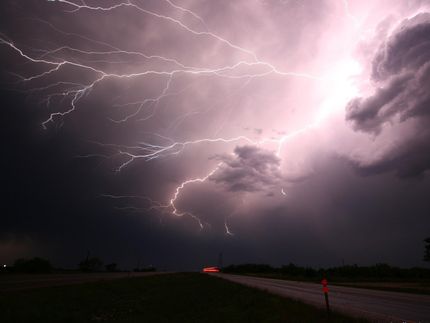Multiyear Tracking of Atmospheric Radicals
New method derive both short-lived atmospheric hydroxyl and chlorine radical concentrations over several years
Hydroxyl radicals (OH) keep our atmosphere clean. They react away toxic gases such as carbon monoxide (CO), and slow climate warming by removing greenhouse gases like methane (CH4). In some parts of the atmosphere, chlorine radicals (Cl) can also help this purification process, for example in the stratosphere. Therefore, scientists are very interested to know how the concentrations of these natural cleaning agents vary over time. Unfortunately, both radicals are extremely difficult to measure directly, as they are highly reactive and present at only extremely low concentrations.
Researchers from the Max Planck Institute for Chemistry in Mainz have now developed a new method to derive both atmospheric OH and Cl concentrations over long periods by using volatile organic compounds. In a paper published recently in Nature Climate and Atmospheric Science, they show how these radicals have varied between 2008 and 2015. “The trick was to use long-term monthly measurements of three trace gases, sulphur hexafluoride (SF6), methyl chloride (CH3Cl) and methane (CH4),” explains Jonathan Williams, group leader at the Max Planck Institute for Chemistry.
These long-lived gases were measured at 10-12 kilometer height from a specially equipped Lufthansa passenger jet (IAGOS-CARIBIC), and combined with measurements made at the ground using the NOAA-Earth System Research Laboratory network. SF6, whose concentration is steadily increasing in the atmosphere since the molecule is not depleted, defined how long it has been between the air leaving the surface and being measured from the plane. Once the scientists knew the “age” of an air parcel, they could estimate how much of a specific compound is oxidized from the moment it left the surface until the measurement. Knowing that CH3Cl reacts mostly with OH radicals and CH4 with both OH and Cl radicals, the Max Planck scientists determined the initial and final concentrations of these gases, allowing the cleaning agent concentrations to be calculated. “One of the nice things about this approach is that the values come from the data directly, without using a complex global model,” says Mengze Li, PhD student at Max Planck Institute for Chemistry.
The concentration of tropospheric OH was found to be on average six times larger than in the lower stratosphere, while the amount of stratospheric Cl radicals was ten times lower than OH. No trend in the data appeared over the seven-year timespan of the measurements. “This stability is reassuring, as strong variations would make the air composition very unstable,” explains Williams. This new method will be useful in tracking future largescale changes in radical concentrations that may occur for example from volcanic eruptions.
Original publication
Most read news
Original publication
"Tropospheric OH and stratospheric OH and Cl concentrations determined from CH4, CH3Cl, and SF6 measurements"; Mengze Li, Einar Karu, Carl Brenninkmeijer, Horst Fischer, Jos Lelieveld & Jonathan Williams; npj Climate and Atmospheric Science, volume 1, Article number: 29 (2018)
Topics
Organizations
Other news from the department science

Get the chemical industry in your inbox
By submitting this form you agree that LUMITOS AG will send you the newsletter(s) selected above by email. Your data will not be passed on to third parties. Your data will be stored and processed in accordance with our data protection regulations. LUMITOS may contact you by email for the purpose of advertising or market and opinion surveys. You can revoke your consent at any time without giving reasons to LUMITOS AG, Ernst-Augustin-Str. 2, 12489 Berlin, Germany or by e-mail at revoke@lumitos.com with effect for the future. In addition, each email contains a link to unsubscribe from the corresponding newsletter.




























































